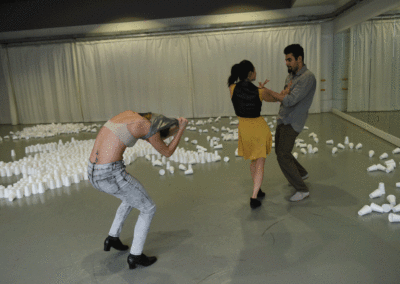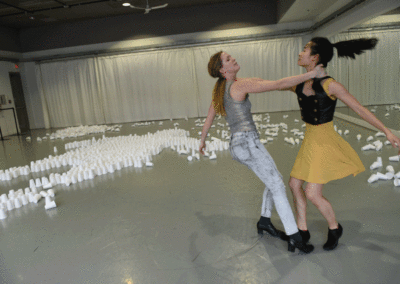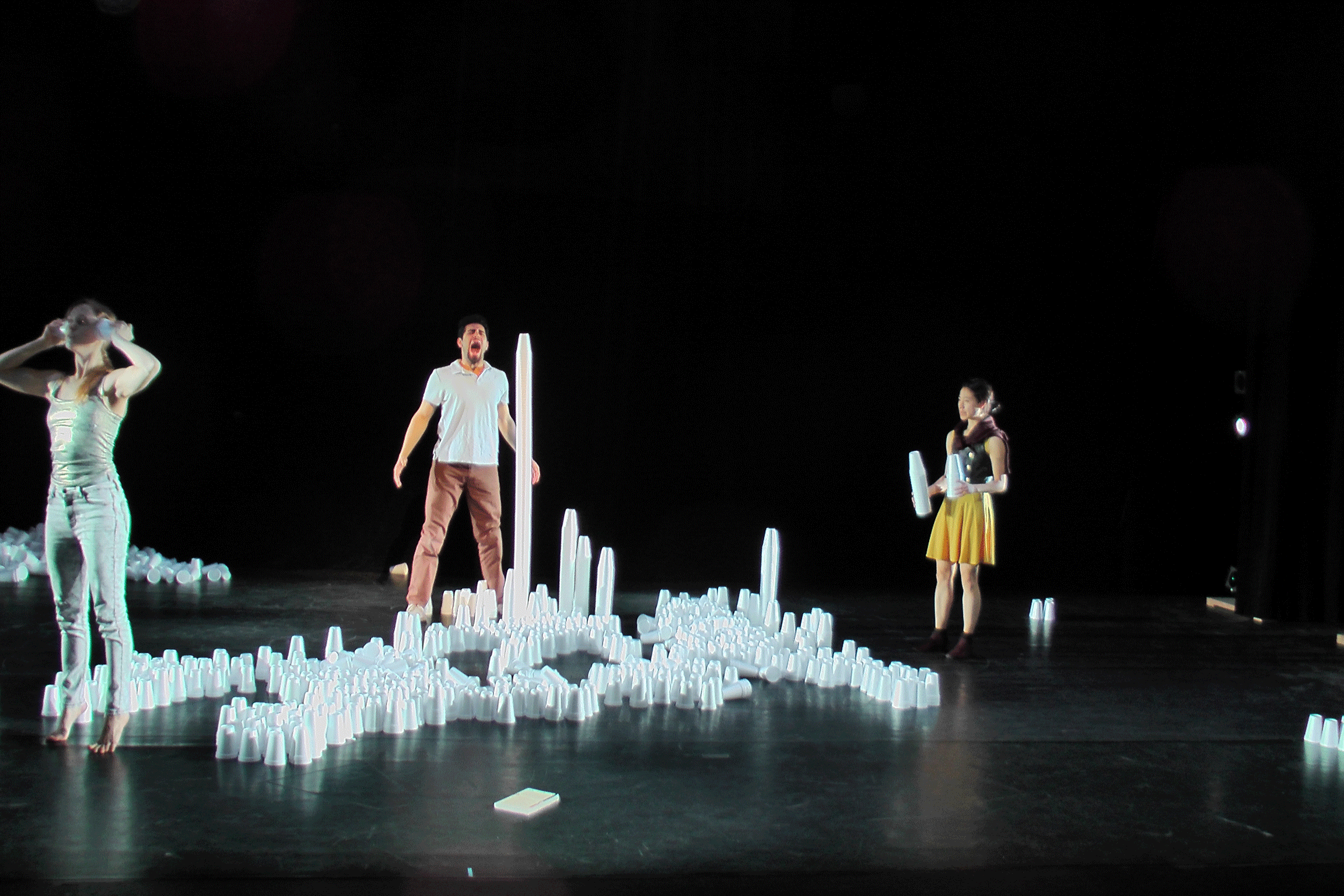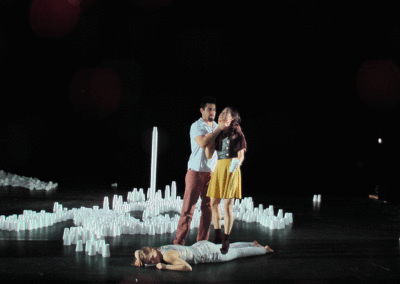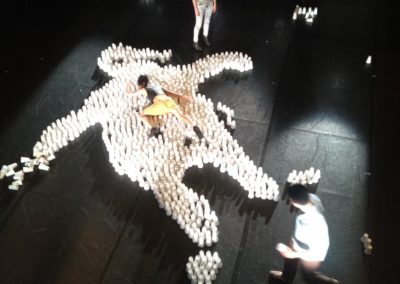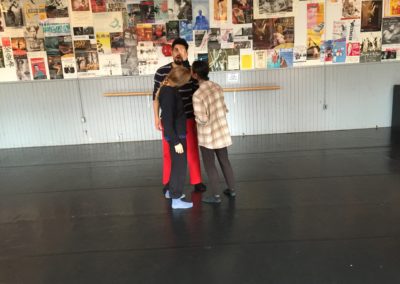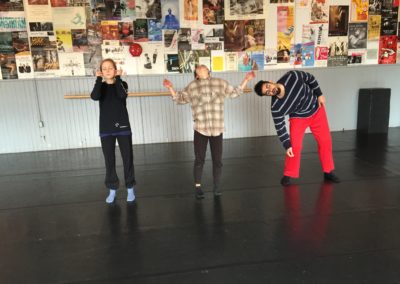Styrofoam Artifacts
2016
Chan Centre for the Arts
Vancouver, BC
The Chan Centre for the Performing Arts at the University of British Columbia (UBC), in partnership with The Dance Centre, presented Words in Motion. This innovative series explored the power of words in performance – both as an agent of change, and as a means of igniting important dialogue.
Writer and choreographer teamed up in an innovative exercise in abstract expression. Paras interpreted elements of writer Nancy Lee’s award winning book Dead Girls as an exploration of relationships, inner demons and search for connection.
He “explored the visceral and emotional landscape of the human condition” in his potent choreography. This rawness, which underlines the style of Terezakis’ own company, Kinesis Dance somatheatro, matches the poignancy of Dead Girls, Nancy Lee’s literary debut. Hailed as “a masterwork of revelation” (The Globe & Mail, 2002), the morbid and moving collection of short fiction examines lives ruled by desperation. Balancing emotive Mediterranean influences with subtle modern technique, Terezakis lays bare Lee’s harsh yet delicate prose.
The piece employed an original score, video and 2000 styrofoam cups.
Collaborators
Choreography, Concept & Direction:
Paras Terezakis
Collaborating Writer:
Nancy Lee
Interpreters:
Thoenn Glover, Arash Khakpour, Michelle Lui
Music:
Alex Mah
Set Design:
Paras Terezakis
Video Artist:
Josh Hite
Go to 1:19 to see clip of Styrofoam Artifacts.
We would like to express our deepest and sincere appreciation to our funders, partners, volunteers and supporters who made this project possible.


We would like to acknowledge that we are gathered and are creating on the traditional, ancestral and unceded territory of the Coast Salish peoples–Sḵwx̱wú7mesh (Squamish), Stó:lō and Səl̓ílwətaʔ/Selilwitulh (Tsleil-Waututh) and xʷməθkʷəy̓əm (Musqueam) Nations.
Review
by Peter Dickinson
Finally, choreographer Paras Terezakis chose to work with Nancy Lee’s short story collection Dead Girls. Drawing from different images and phrases in the book (as well as the book itself as object), Terezakis conjures a physical environment that consciously explores the interplay between and mutability of representational and non-representational forms. To this end, the hundreds of styrofoam cups scattered across the stage floor at the start of the piece (and upon which dancer Michelle Lui lies prone) evoke the chalk outline of a dead body on the street; but they will also eventually be stacked into various towers that suggest a scale architectural model of an urban landscape. Similarly, the dancers (Lui, joined by Thoenn Glover and Arash Khakpour) partner in ways that speak to different entanglements based on obligation or indebtedness or violence or love. However, Terezakis’ juxtapositions between bold externally-directed physicality and small and tender moments of stilled self-care (captured for us via video) are equally evocative of how the embodied language of dance can capture the tone and emotional textures of a literary work in non-expository way.
P.

